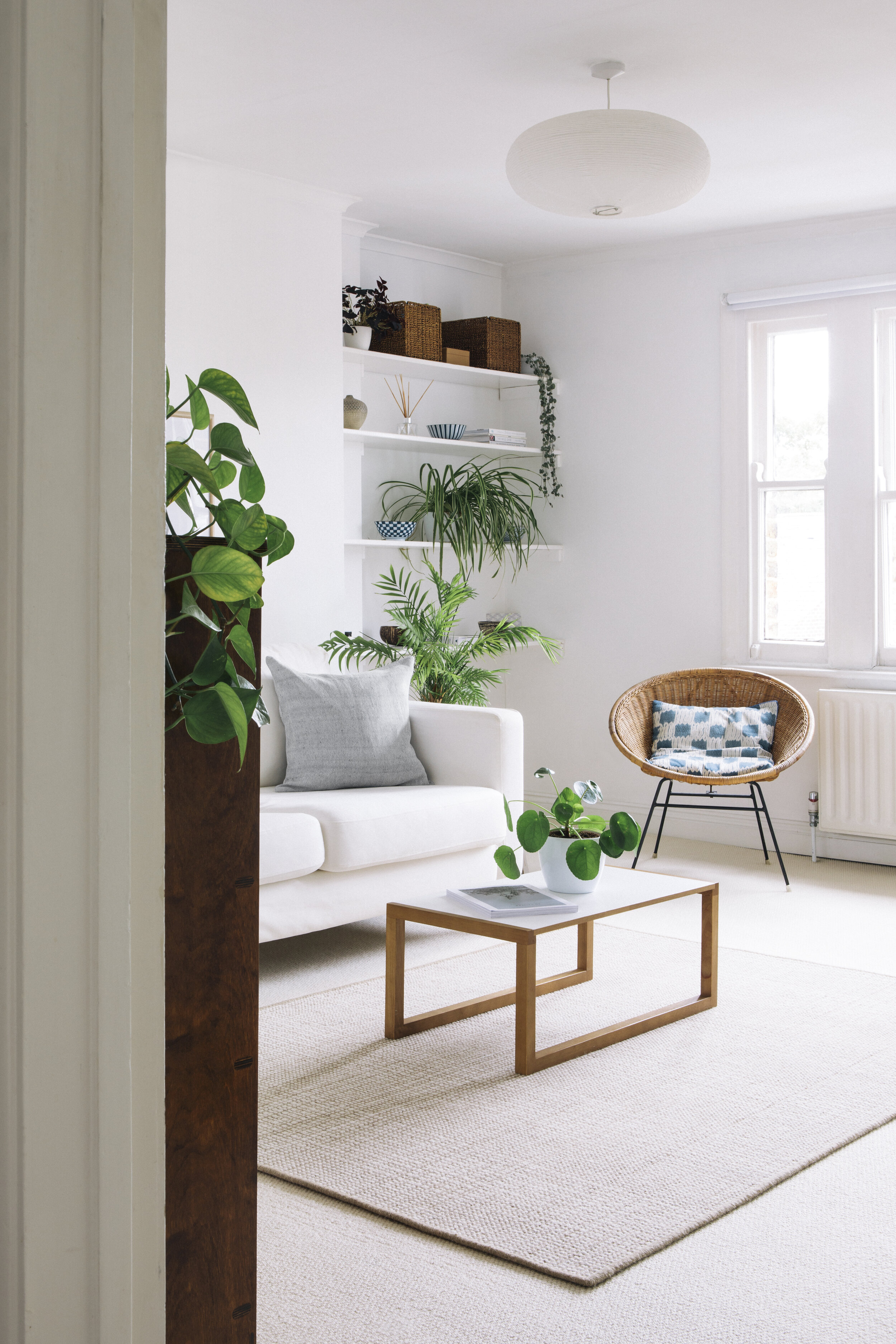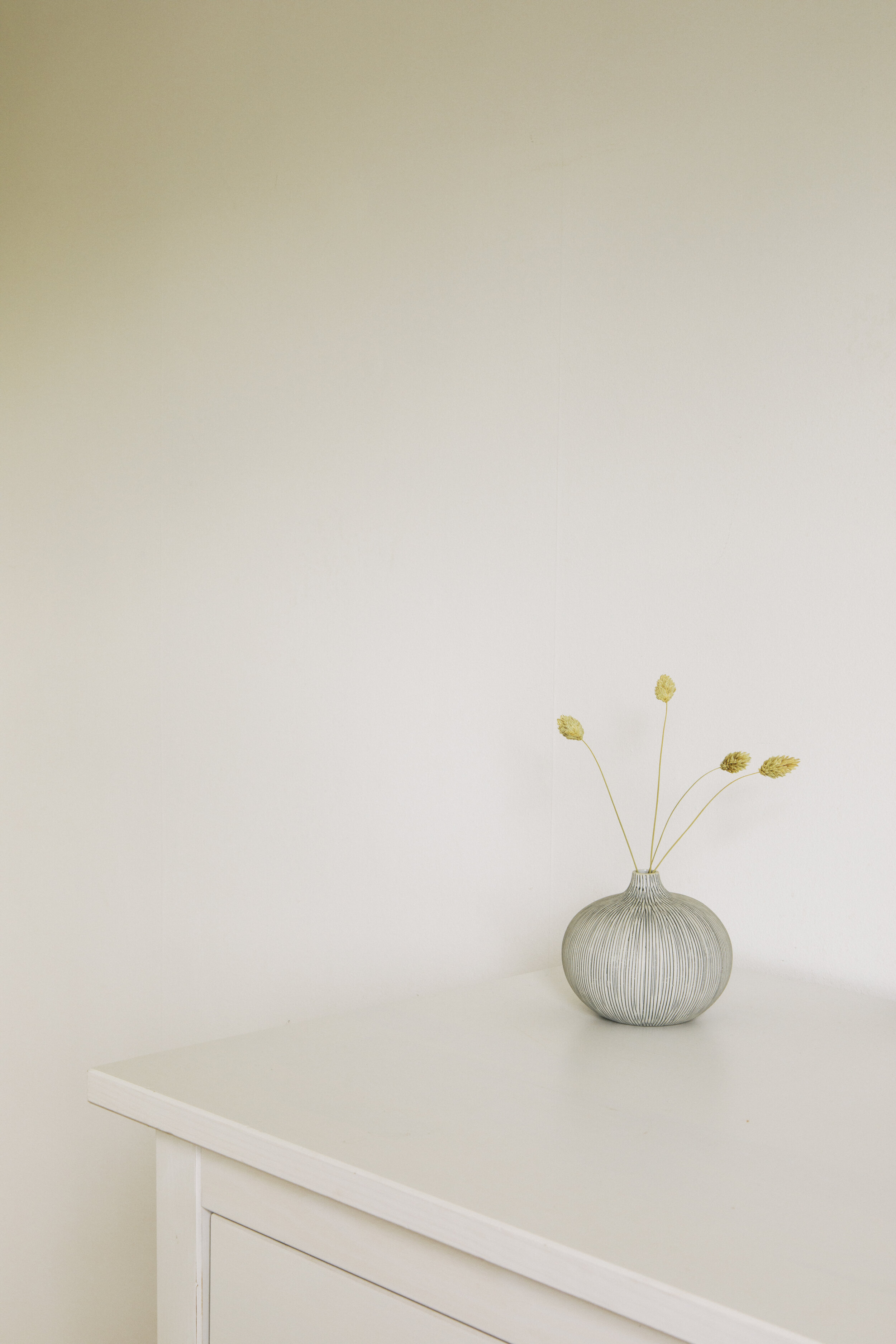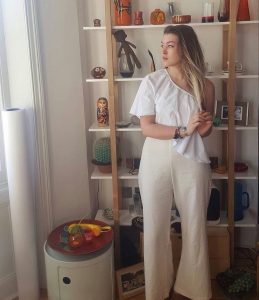Kate Anderson, founder of Ecosophy, is on a mission to eradicate unsustainable practices from interior design, one consciously-sourced textile at a time. Founded four years ago, Ecosophy’s philosophy is embedded within its name: “eco”, derived from the Greek oikos, meaning ‘household’ and “sophy”, taken from “Sophia”, meaning ‘wisdom’. This duality represents their ethos of ‘ecological wisdom’ and ‘household wisdom’. But how does this manifest in Kate’s own home in Brockley, London?


“I think the main way is through being aware of how the products in my home have been made and where they’ve come from,” says Kate. “I’ve tried to educate myself about the sustainability of various materials and to choose ones that are healthy to live with and good for the planet.”
Her background in anthropology and sustainable development laid the groundwork for developing her recognition of how the objects and materials in our lives can influence our relationship with the world. To Kate, this means melding an appreciation for cultural artistry with choosing interior design that impacts people and the environment for the better.



The four-storey building, built around 1900, is late-Victorian and the simplicity of the building’s architecture complements her low-key interior scheme, which she says nods to its Victorian heritage. Her top-floor flat has been her home for the past five years, but the permanency of living in one spot has invited a longing of her next move abroad.
“I’ve lived in many places,” she says. “My father worked for the RAF, which meant that as a child I moved around a lot. I think my early experience of moving frequently gave me a bit of a nomadic soul and until I bought this flat, I tended to move to a different place every couple of years. I love living in Brockley, but I often dream of moving abroad again.” Kate credits her four years living in Japan as the most formative to her eye for design and describes her style as “minimalist with influences from Japan and Scandinavia.”


Her understated white walls harmonise with the handcrafted textiles, plants and ceramics she’s carefully selected as pieces which impart a feeling of place – either in nature or within the craftmanship of another culture. The three-walled windows pour an endless of stream of light into the corners of her flat and impart an air of soothing calm. Kate works remotely from home most of the working week, working on anything from marketing to customer relations, saying: “I need a tidy space that’s pleasant to be in but free from distractions. That’s one of the reasons why my flat has quite a minimalist style. The materials and colours of white, brown and green that I’ve used were chosen to that effect. I want to feel connected to the outside world.”
She’s drawn to decorative pieces made with purpose and care, such as a plant-dyed indigo cushion, made in Bangladesh by artisans who were taught the shibori technique by a Japanese expert and who use indigo dye that’s gathered from indigofera plants grown along unused roadsides.
“The textile industry is a huge employer of people in developing countries,” Kate explains. “In India, for example, it’s the second largest employer in the country, providing jobs to around 45 million people. But it’s also a big source of pollution. The latter isn’t inevitable though, as it’s perfectly possible to produce textiles sustainably and there are increasing numbers of suppliers who are doing that.”



“When I was decorating my flat, my priorities were to use natural and sustainably-produced materials,” she says. “I’m a big believer in the principle of biophilia and humans having an innate need to be surrounded by natural materials.”
Her stairs are lined with sisal, a type of renewable crop, which grows in dry conditions and requires little chemical input in the manufacturing process. Her carpets and mattresses are made from 100% natural fibres and many are organic or naturally-dyed. “In terms of furniture,” she says. “I have a few second-hand pieces, and most of the other items are made of FSC-certified wood.”
“But my flat is far from perfect,” Kate adds, making no secret of the pieces which are there by necessity. “I have some cheap MDF pieces from high street brands that I bought as I was on a limited budget. I regret buying them though, as they don’t have much character and kind of spoil the overall look. If I could go back in time, I would seek out second-hand pieces instead of these.”


Her house for one is soon to become a house-for-two as Kate is currently pregnant with her first child, which has prompted her to consider how she’ll apply her ethos to the world of baby wares. “Basically, my drive for an all-natural home will be ramped up,” she laughs. “I think it’s quite likely that I’ll move as my white carpets and third-floor position are not ideal for babies.”
Looking to the future, she says: “If I were to move, though, I’d probably add a bit more colour. I’ve enjoyed living in this calm, neutral palette, but I think I’m ready for a bit more excitement.”
IG: @ecosophyhome
Photography/Styling: Anna and Tam












